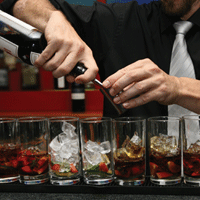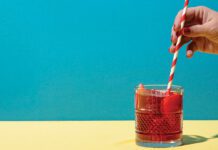New inventory control software raises the bar for alcohol sales at your establishment
While some restaurateurs resist the sparkling allure of new gadgetry, others are more than ready to open their hearts (and wallets) to products that promise to save them time and money. When it comes to managing your alcohol inventory, for every operator who’s nervous about taking on a new system that can cost upwards of $5,000, another has taken the plunge and can reassure the skeptical that, in many cases, the software pays for itself in loss prevention alone.
Some companies catering to the hospitality industry have created software that’s compatible with hand-held devices, so a storeowner can briefly glance at his or her BlackBerry to determine if sales match consumption at any time of day. The devices are designed to save time by cutting a potential six-hour inventory count down to 20 or 30 minutes, and they help managers identify and rectify situations that lead to losses as well.
“It’s allowed me to get a tighter control on draft beer cost,” says Andrew McLeod, general manager at an Edmon-ton Boston Pizza, of the iBar inventory control system he uses. “It can identify theft, too,” he adds.
How does the software work? Well, in a variety of different ways, according to a restaurant’s wants and needs. The iBar is a wireless system designed to work with a hand-held Microsoft computer that’s linked to a scale. To determine how much liquor is in stock, a manager can weigh the goods, scan them and have the exact weight transmitted immediately to a computer or other hand-held device. The weight will be tracked throughout business hours, and the manager can then compare the amount of liquor sold to the amount remaining at the bar.
If a manager isn’t able to purchase the hand-held device option, the software can be linked directly to a dispenser to measure outgoing alcohol. It can do this on a daily basis, making counting convenient and practically instantaneous. “It’s fairly low-cost,” says McLeod, of the software he installed two-and-a-half years ago. “It’s only $150 a month to rent, so it has paid for itself.”
Boston Pizza saves money, even though its main draw is food rather than booze. For a bar, the savings accrued with the implementation of liquor-control software are far more noticeable — and encouraging. “We save about $300 to $400 a week,” says Mike Haines, manager of The Martini Bar in St. John’s. “Before, I don’t want to say there was theft, but there was over-pouring due to bartenders not being conscious of how much they were pouring. They could have been giving away full bottles for free.”
Haines’ bar uses a free-pour method, and the installation of the software proved just as beneficial to the taste of his cocktails. With stricter control over pouring, bartenders have been better able to abide by recipes, thus ensuring consistency in taste every time, regardless of who is pouring. “I know inventory inside and out,” Haines says. “If you don’t know what you’re going through, you don’t know what you’re losing.”




















